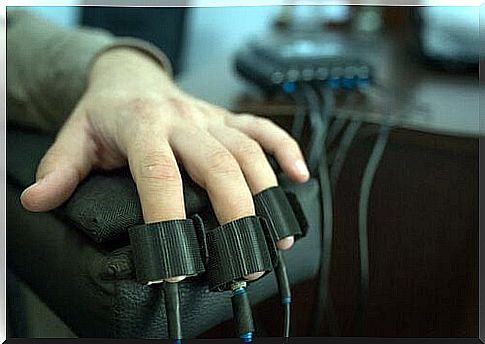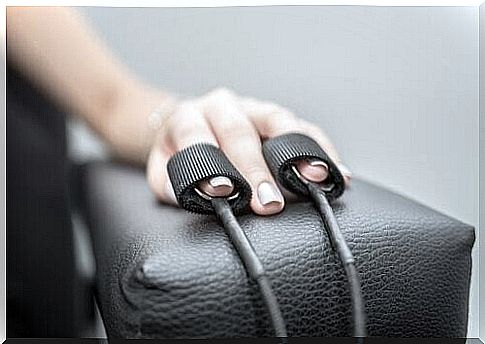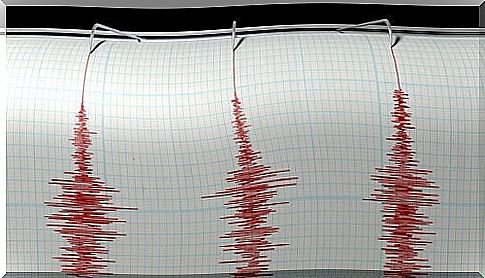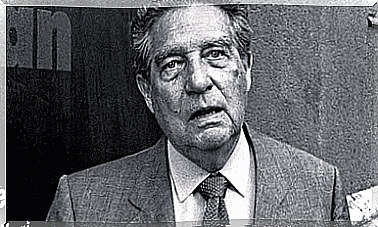Lie Detector: Is It Effective?

The polygraph, commonly known as a “lie detector”, is an instrument that has its origins in the 20th century. The etymology behind the word comes from poly, which means “many” and graph that refers to graphics and writing.
Therefore, we can say that the polygraph is a machine that is responsible for generating many graphs simultaneously. But what do these graphs measure? They only determine the physiological response that the interviewer experiences.
A lie detector comes from the idea that emotions can manifest in our body’s reaction. Eg. if I feel fear, the fear will result in sweating, increased heart rate and restless breathing.
A lie detector is used primarily for people suspected of having committed a crime. Lawyers use it to determine if the accused is telling the truth or lying during the course of their testimony.
A short story about the lie detector
In the 1920s, people began to try to create a machine that could detect fraud. This was thus the birth of the polygraph. William Marston was responsible for creating the project. He created a deception curve based on various blood pressure measurements.
However, scientists did not accept the results of his bulb detector as evidence. In fact, the scientific community did not approve of it at all as a legitimate procedure.
Later, Larson, a psychiatrist and police officer from Berkeley, built a modified version of his predecessor’s lie detector. With this, he wanted to modernize the security forces and avoid the brutality that lawyers would sometimes use to grab a testimony.
Along with measuring blood pressure, he also introduced another measure: the respiratory rhythm. He added this parameter, with the aim of increasing the accuracy of the results. Thus, the police began using this lie detector in their investigations in 1924.

But this machine had to undergo even more developments to become what it is today. Keeler added these advances. The new measurable variable that Keeler added was electrodermal activity.
Electrodermal activity is about the extent to which our skin is able to conduct electricity. Scientists believed that doubt, and in extension of this, lies, increased our skin’s electrodermal activity. This physiological reaction is related to fear or anxiety.
How does a lie detector work?
There are two tests within a lie detector that are frequently used. The way they each work is different. But both are based on the formulation of questions, with the aim of creating certain emotional changes in the suspect. The idea is to get the suspect to manifest their feelings through their physiological reactions.
CQT (Control Question Test)
This is the most frequently used test. It contains three different types of questions that the interviewer asks: The irrelevant, relevant and control questions.
Irrelevant questions
These are questions that do not give us any important information. They are general questions and are not related to the case that the interviewer is investigating. The interviewee is not expected to show any kind of arousal or activation when answering these questions.
Relevant questions
These questions are actually related to the study. They are specific questions about the event that happened. We should expect the answers to be negative (to give an affirmative answer, it would be assumed that they admit the facts). The culprit will experience a greater level of activation (both emotionally and physiologically).
Control issues
These are extremely ambiguous questions. They are very imprecise. The questions are intended to be impossible to answer in a negative way without doubting the answer itself. They mostly refer to very distant facts.
They do not have any kind of relation to the case, but they can refer to things that the person did a long time ago that could show a resemblance to the event being investigated.
For example, if the crime was a murder, the interviewer asks the interviewee if they have ever harmed anyone in their lives. With this question, a guilty and innocent person will exhibit the same level of arousal.
The interviewer is looking for an innocent person to present a greater level of activation under control questions. Because these questions are more ambiguous, they will be afraid to make a mistake in their answers.
In questions that are more relevant to the case, they respond with less activation because they have nothing to do with the crime. However, the culprit will show a higher level of activation during the relevant questions. This is because the body responds more to this type of question than to the control questions.
GKT (Guilty Knowledge Test)
This is a test of the culprit’s knowledge. It refers to the knowledge that the culprit has about the case. The interviewer asks several questions with several possible answers, where only one of them is the correct answer.
It is believed that the sinner will know which of them is the right choice. They will present a greater excitement when the interviewer says the correct answer. However, the innocent who does not know about the case should present the same level of activation in each and every one of the options.
This is because they do not know what is correct because they have no knowledge of the subject. In this way, the correct answer must be fully acknowledged by the culprit. However, the innocent will not know what to choose.

Limitations of a lie detector
Despite the fact that we have been using lie detector for many years, we can not ignore the fact that there are certain limitations which reduce the reliability of the machine. In 2003, the National Research Council created a report on the lie detector.
It analyzed the psychological concepts on which this instrument is based. It also looks at the procedures it follows. These are the researchers’ most important conclusions:
- The precision of the polygraph. The physiological responses measured by the machine do not only correspond to deception. That is, there is a wide range of physiological responses that can externalize themselves physiologically, in the same way that fraud does. This greatly limits the accuracy with which the machine is intended to measure.
- Theoretical bases. The scientific theoretical bases on which the polygraph is based are very weak. Terms such as fear and arousal are not very well defined. Because of this, the measurements of a lie detector are not entirely reliable when generalizing these results relative to other populations and groups. In short, you cannot make generalizations of data taken from other people that have not been studied.
- The accuracy of the proof. Research in studies does not care about the accuracy of the test. In this case, the consequences of determining whether a person is lying or not are very important. However, this lack of reality can lead to serious problems because it leaves a high margin of error when we assess innocent people.
- People use the polygraph when there is no other strong evidence to criminalize a suspect, so the results of a lie detector cannot be compared in any way.
- There are countermeasures that make it possible to lie under a lie detector. People have learned to control their physiological responses. They can manipulate the machine in a way that will bring the results to their advantage.
Is a lie detector effective?
Although we have only highlighted some of the limitations of the machine, the report points out many more. Hereby we can deduce that the polygraph is far from completely reliable. This is very worrying if we think about the many areas that use a lie detector.
The truth is that the lie detector has several shortcomings. This should be cause for alarm, as using a method that does not guarantee accurate results may increase the likelihood of convicting a person who is actually innocent.








